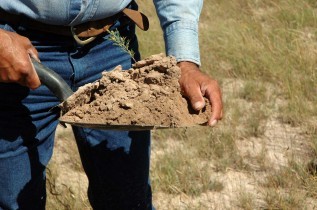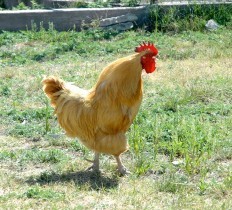Improve the health and productivity of Land — right in your own backyard
- Jan 25, 2012
- 2 min read
Here's an article from Village Vision Magazine in Los Ranchos, New Mexico. Even urban farmers can benefit from practicing Holistic Management....
Call it what you will – backyard farming, urban homesteading, or edible gardening – more and more urban and suburban folks are becoming aware of the need for healthy land, healthy food, and a healthy sustainable environment —and they're doing something about it!
At HMI, we are often asked, "What can I do on a small piece of land — in my own backyard?"
"While HMI is perceived as an organization that works on large landscapes around the world", CEO Peter Holter says, "we also know the importance of being local —and dealing with smaller plots of land —one acre, five acres, ten acres."
Holter says HMI is "all about the dirt" on any given piece of land, large or small — increasing litter cover on the soil, increasing new seedling success, building plant diversity, improving water infiltration, and reducing soil erosion and amount of soil crusting — all of which lead to healthier, more productive soil.
"On five acres," Holter says, "if you increase the organic matter by 1% through better soil management practices, you capture 8,352 gallons more water per acre for a total of 41,760 gallons. Likewise, you capture 21.73 tons of CO2 per acre for a total of 109 tons of CO2. Given that the average CO2 emissions per family is 19 tons, you've just made 5 people carbon neutral — right in your own backyard!"
Holter goes on to say there are some specific things the owner of five acres can do to improve the health of that land:
Raise poultry — chickens, ducks, geese, turkeys, etc. (preferably in a portable poultry pen) will increase animal impact on the land. They will have consistent use of forage, and prevent land degradation. They will eat bugs, fertilize the soil, and graze plants. They can be integrated easily into gardens, orchards, and vineyards.
If you have irrigated enough land (as little as one acre, in some cases), you can raise larger livestock like sheep or goats. If managed effectively (using electric netting to contain animals and control their grazing), you can improve soil health and land productivity (grow more forage) and improve water infiltration so that you capture more water. Lastly, you increase carbon sequestration.
By integrating livestock with gardens, orchards, and vineyards, you close the mineral cycle. Instead of importing fertility amendments, you are creating your own fertilizer while growing your own healthy food and contributing to a sustainable food system.
Keeping poultry and livestock in the city
on regulations in your area. As one example, in Albuquerque, New Mexico, a city of over 500,000, you can do the following: In most R-1 residential areas in ABQ, up to 15 chickens are allowed regardless of lot size; and one rooster is allowed subject to noise complaints. One large cow, horse, goat, or sheep is allowed per 10,000 square feet (1/4 acre) of open lot area, or one sheep or goat for each 4,000 square feet of open lot. Lots must have at least 21,780 square feet, or half an acre according to the city ordinance.



